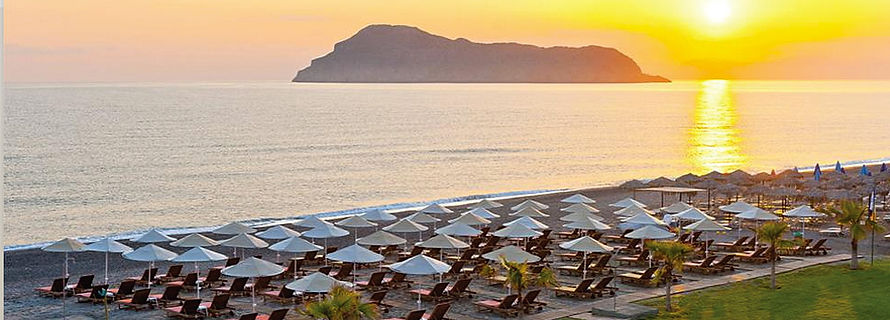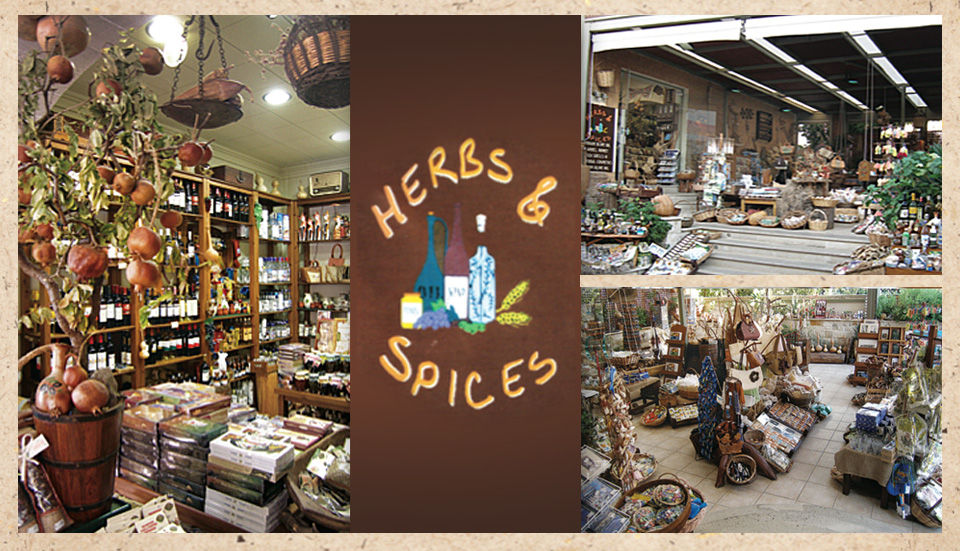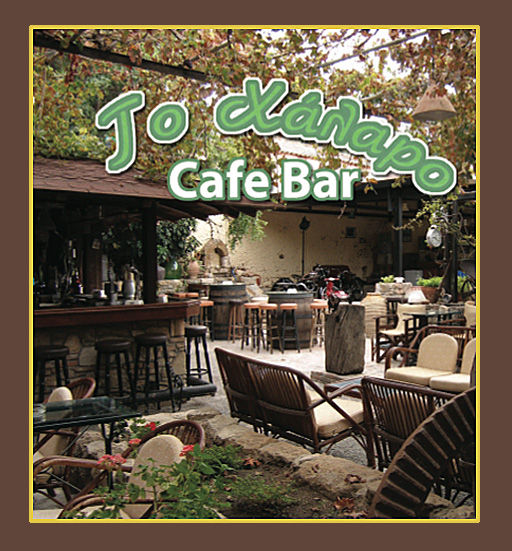The first villages we come across are Platanias and Gerani, villages with considerable tourist development. Platanias is a small village 10 klm from Hania following the road towards Kasteli. It is situated by the mouth of the homonymous river Platanias (Iardanos River according to Homer). At the river's shore, there are many plane trees (platania) which explains the name of the village. In Venetian inventories Platanias is mentioned by the Venetians as Basilicata and Kastrofilaka as Platanea and Pirgho Platanea. It is possible that there were two different settlements. The village is built amphitheatrically in a high rocky place, with picturesque houses it is very beautiful with narrow streets and houses full of character and small shops that have been renovated with a sensational view of the Cretan Gulf of Akrotiria of Spathas and the small island of Thodorou. Now the town has spread to a great extent, especially towards the sea. Opposite Platanias lies the island of St. Theodori or Thodorou. The Turks mention it as Tourlou-Andasi, and the Venetians as San Theodoro or San Todaro and in a distorted version Turluru and Turlusi. In 1574, during the Venetian occupation, it was decided to fortify it in order to stop the Turks from landing in Platanias. Therefore, they built at the highest peak on the island a multi-angled fortress that they called Turluru, and another multi-angled fortress at a lower level that they called San Theodoro or San Francesco. There used to be a three-aisled chapel of the St Theodori but only its foundations remain today. At present, the island serves as a breeding ground for the Cretan mountain goat. Platanias had been the head quarters of the general Timoleon Vassos in 1897, during the fight of Crete against the Turks.
The wonderful beaches and the considerable tourist development combined with many facilities for visitors make Platanias the most important tourist centre of western Crete.

Platanias


Platanias Village, Chania tel: +302821068201. Open from April to October. Credit cards: Visa, American Express. Excellent restaurant offering the best view in the whole area of Platanias, built on an impressive building, a real palace. Try the traditional greek cuisine. Complete cellar and very good service.

Platanias Village, Chania tel: +302821068201. Open from April to October. Credit cards: Visa, American Express. Excellent restaurant offering the best view in the whole area of Platanias, built on an impressive building, a real palace. Try the traditional greek cuisine. Complete cellar and very good service.

Platanias Chania, tel: 28210 36500 www.minoapalace.gr

Platanias Chania, tel: 28210 36500 www.minoapalace.gr

Upper Platanias, tel. +3028210-68337 www.Agioklima-restaurant.com e-mail: info@agioklima-restaurant.com Open all year round. It is one of the best restaurants in upper Platanias, with nice atmosphere, providing a friendly and very good service. A beautiful, flowery environment, but mostly excellent homemade food prepared with olive oil. Enjoy our Cretan traditional and international food, and try other specialties at the best prices in the area.

Upper Platanias, tel. +3028210-68337 www.Agioklima-restaurant.com e-mail: info@agioklima-restaurant.com Open all year round. It is one of the best restaurants in upper Platanias, with nice atmosphere, providing a friendly and very good service. A beautiful, flowery environment, but mostly excellent homemade food prepared with olive oil. Enjoy our Cretan traditional and international food, and try other specialties at the best prices in the area.

Limanaki [Small Harbour], Platanias, tel. +3028210 68859 Manager: Dimitrios Pantazis Open from April until October. The restaurant owes its name to its location, in the small picturesque harbour of Platanias. It has a 25-year-long history, and is justly considered one of the best restaurants in Chania, with a clientele that comes from the other end of Greece. It is famous for its fresh fish, lobster spaghetti, and incomparable fish soup (kakavia). It also serves a great vari

Limanaki [Small Harbour], Platanias, tel. +3028210 68859 Manager: Dimitrios Pantazis Open from April until October. The restaurant owes its name to its location, in the small picturesque harbour of Platanias. It has a 25-year-long history, and is justly considered one of the best restaurants in Chania, with a clientele that comes from the other end of Greece. It is famous for its fresh fish, lobster spaghetti, and incomparable fish soup (kakavia). It also serves a great vari

Tel: +302821-60531 Open from April to October. Cretan people’s good health is due to their nutrition. Going towards Platanias village you will find the best products of the Cretan land in our shop. Unique herbs with medicinal properties, virgin olive oil, honey, traditional drinks such as raki and wine, traditional sweets and olive-oil based cosmetics, all carefully chosen by our best growers.

Tel: +302821-60531 Open from April to October. Cretan people’s good health is due to their nutrition. Going towards Platanias village you will find the best products of the Cretan land in our shop. Unique herbs with medicinal properties, virgin olive oil, honey, traditional drinks such as raki and wine, traditional sweets and olive-oil based cosmetics, all carefully chosen by our best growers.
We Recoment

Platanias Chania, Tel: +30 28210 60068 www. littleluxurydayspa.gr

Platanias Chania, Tel: +30 28210 60068 www. littleluxurydayspa.gr

Platanias tel.+30 28210 61109 Open from May until October. In front of the hotel, at the wonderful pool by the sea, you can have snacks, refreshments and cool cocktails, while enjoying the sun and taking a bath in the pool. Also, we serve Greek and Cretan specialities and recommend the dish of the day. On Wednesdays, an evening happening is performed for those who want to become acquainted with the traditional dances and music of Crete.

Platanias tel.+30 28210 61109 Open from May until October. In front of the hotel, at the wonderful pool by the sea, you can have snacks, refreshments and cool cocktails, while enjoying the sun and taking a bath in the pool. Also, we serve Greek and Cretan specialities and recommend the dish of the day. On Wednesdays, an evening happening is performed for those who want to become acquainted with the traditional dances and music of Crete.

Kamisiana, Tel. 28240 22373 e-mail: eleni_stylianoudaki@hotmail.com Located in the quiet picturesque village of Kamisiana, this very beautiful restaurant is set in a verdant environment, idyllically cool in the summer. You can have coffee or orange juice in the morning, and then enjoy their Greek and Cretan cuisine in a friendly and family-like atmosphere, with good wine and raki. Ideal at all hours of the day, with a playground for your children. The restaurant

Kamisiana, Tel. 28240 22373 e-mail: eleni_stylianoudaki@hotmail.com Located in the quiet picturesque village of Kamisiana, this very beautiful restaurant is set in a verdant environment, idyllically cool in the summer. You can have coffee or orange juice in the morning, and then enjoy their Greek and Cretan cuisine in a friendly and family-like atmosphere, with good wine and raki. Ideal at all hours of the day, with a playground for your children. The restaurant

Platanias Tel: +30 6946065361

Platanias Tel: +30 6946065361

Platanias, tel: +30 28210-60345. Open April – October. In the centre of Platanias, a very nice Garden-Bar with an wonderful yard. An endless variety of cocktails, very good music and amazing live bands.

Platanias, tel: +30 28210-60345. Open April – October. In the centre of Platanias, a very nice Garden-Bar with an wonderful yard. An endless variety of cocktails, very good music and amazing live bands.



